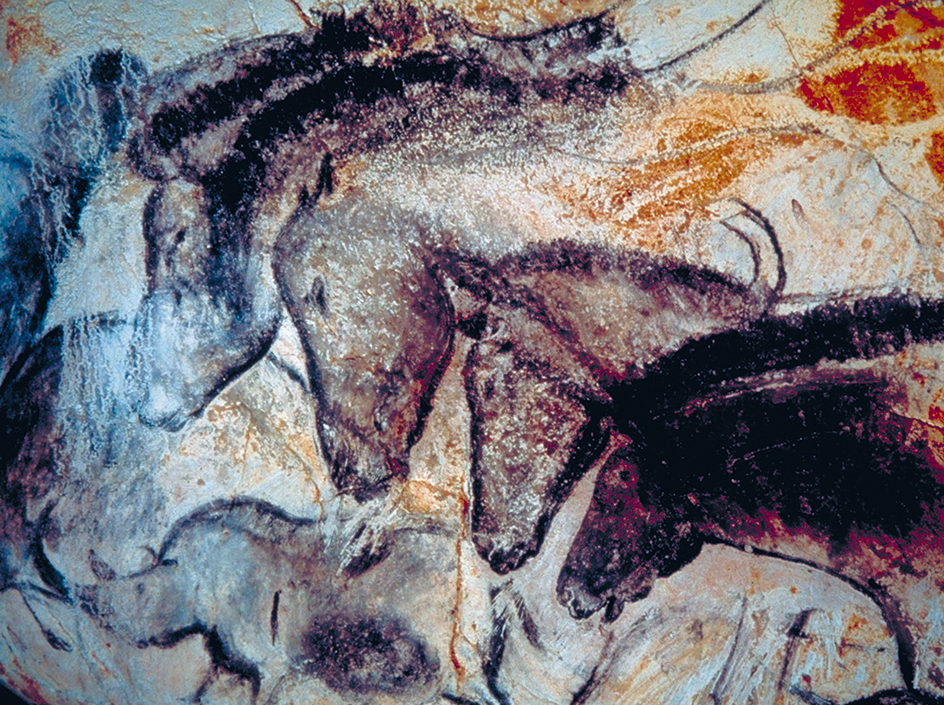Woolly rhinoceros was a prehistoric animal related to modern rhinoceroses. Woolly rhinoceroses roamed the grasslands from Europe to northern Asia during the Ice Age, a period in Earth’s history when ice sheets cover vast regions of land. 
The woolly rhinoceros was well adapted to the cold climate of the Ice Age. A thick coat of shaggy hair covered its body. It had two huge horns it may have used to sweep the snow away from the grasses and low shrubs it fed upon. A muscular hump above the shoulders helped support the weight of the large horns. An adult woolly rhinoceros stood up to 6 feet (1.8 meters) at the shoulder and weighed up to 3 tons (2.7 metric tons). Among the Ice Age megafauna (large animals), only mammoths and mastodons were larger.
Woolly rhinoceroses are known from many fossils found at sites across Eurasia. Many specimens have been discovered buried in the frozen tundra of Siberia, including some with hair and soft tissues preserved. Frozen specimens reveal that the animals had a thick undercoat of fur covered by a layer of long reddish-brown hair. Woolly rhinoceroses are also occasionally depicted in cave paintings made by prehistoric people in Europe. Most such images are found at Chauvet Cave in France, which has around 60 woolly rhinos depicted on its walls.
Woolly rhinoceroses became extinct about 10,000 years ago. Some experts think that overhunting by prehistoric people drove woolly rhinos and many other large prehistoric animals to extinction. Other experts think that climate change or a combination of several factors caused the extinctions.
A more distant rhinoceros relative called Elasmotherium also inhabited Ice Age grasslands from southwestern Russia and Ukraine to Kazakhstan and Siberia. This prehistoric animal is sometimes depicted as woolly. But scientists are uncertain if Elasmotherium had a hairy coat. Elasmotherium is sometimes called the “Siberian unicorn” because paleontologists think it sported a single enormous horn on its head. However, some paleontologists think that the animal had a smaller, dome-shaped horn. Elasomotherium became extinct about 39,000 years ago.
